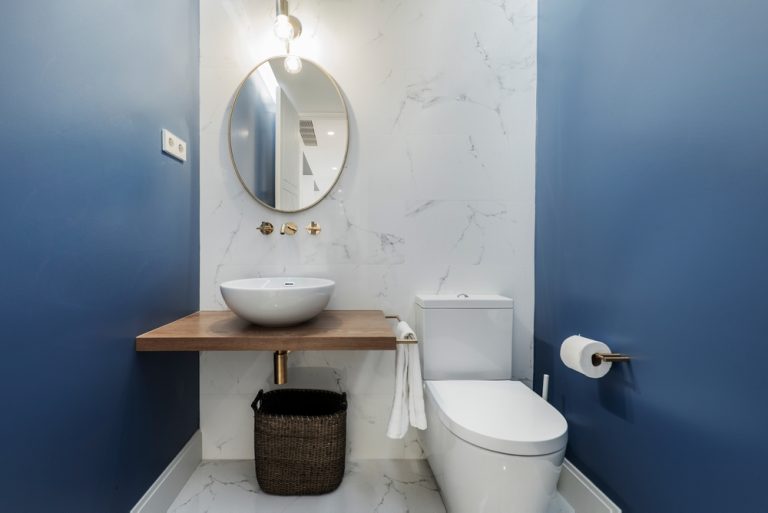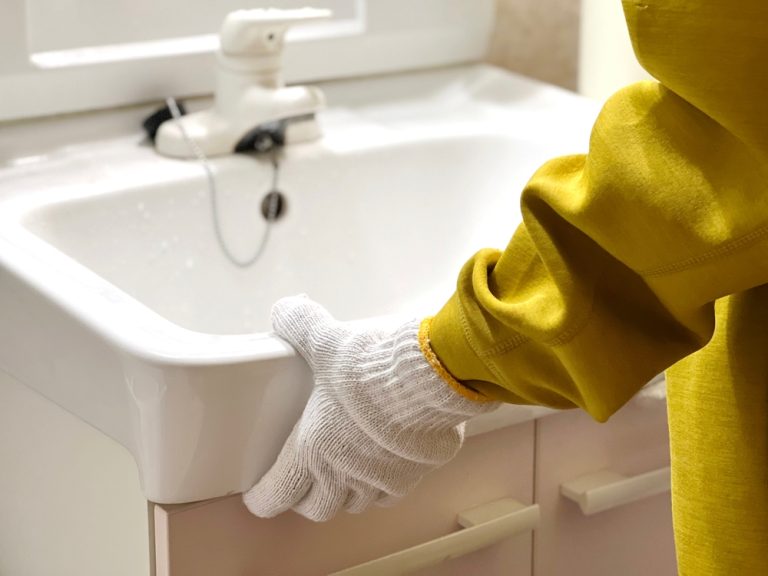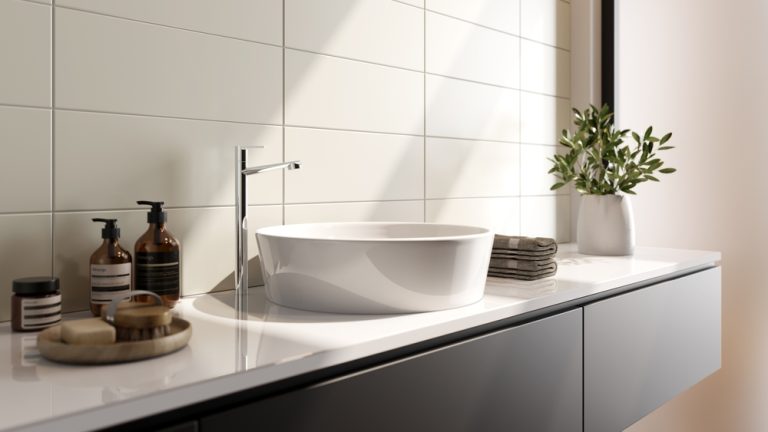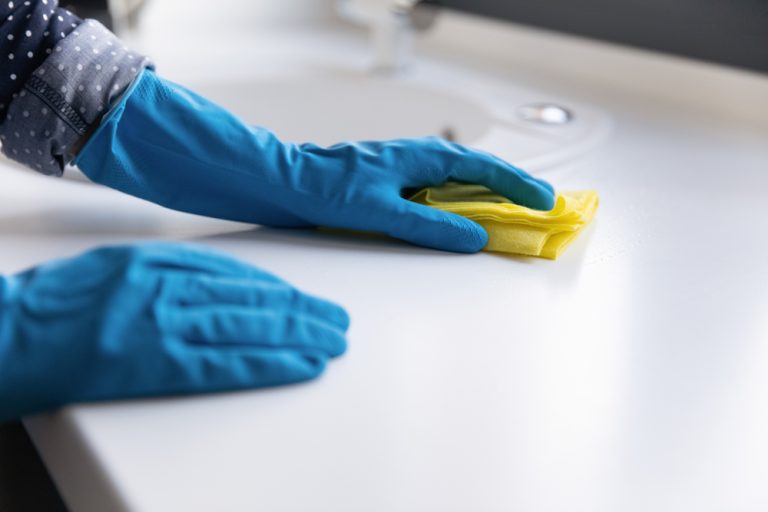How to Change Bathroom Countertops Without Replacing?
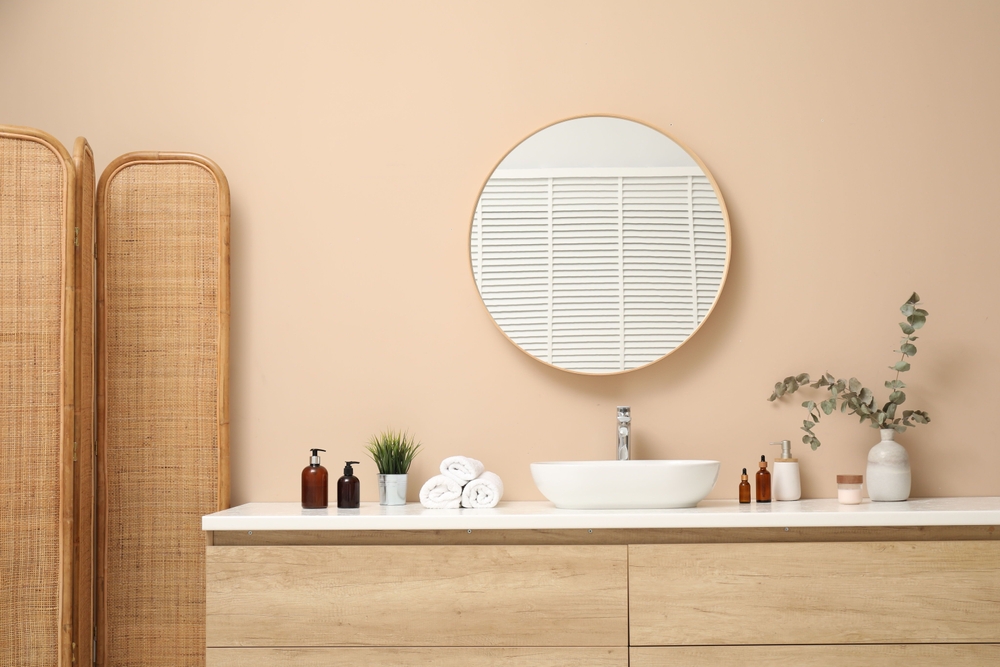
Your bathroom countertops play a significant role in the overall look and feel of your bathroom. If your countertops are outdated or worn, you may feel the urge to replace them. However, a full countertop replacement can be expensive and time-consuming. Fortunately, learning how to change bathroom countertops without replacing them is a cost-effective solution that can refresh the space without the hassle of a complete renovation.
In this guide, we’ll explore creative ways to update your bathroom countertops without replacing them entirely.
Why Update Your Bathroom Countertops Without Replacing Them?
Bathroom countertops are often exposed to moisture, soap, and cleaning products, which can lead to wear and tear over time. Replacing countertops can be costly, but there are several ways to change the look and functionality of your countertops without removing them altogether.
Here are some reasons why you might opt to change the look of your countertops rather than replace them:
- Cost-Effective: It’s much cheaper to refresh your countertops with a DIY project than to replace them with new materials.
- Quick and Convenient: Avoid the mess and inconvenience of a full remodel by simply updating the surface of the countertop.
- Customizable: Updating your countertop allows you to create a unique, personalized look that matches your style and bathroom decor.
Methods to Change Bathroom Countertops Without Replacing Them
If you’re wondering how to change bathroom countertops without replacing them, here are a few proven methods that can help you achieve a fresh look without the need for a full replacement.
Paint Your Countertops
One of the most popular ways to update bathroom countertops without replacing them is by painting the surface. Painting is a budget-friendly option that can transform the look of your countertops with minimal effort.
- Step 1: Start by cleaning the countertop thoroughly to remove any dirt, soap scum, or grease. Use a degreaser if necessary.
- Step 2: Lightly sand the surface with fine-grit sandpaper (220 grit) to ensure the paint adheres well. Wipe away any dust with a damp cloth.
- Step 3: Apply a coat of primer that is suitable for the countertop material, whether it’s laminate, granite, or tile.
- Step 4: Once the primer is dry, apply the countertop paint using a roller for smooth, even coverage. Depending on the desired finish, you may need to apply two coats.
- Step 5: Finish with a clear sealant to protect the painted surface from moisture, stains, and daily wear.
Apply a Faux Finish
If you love the look of stone or marble countertops but don’t want to pay for a full replacement, applying a faux finish can give you the luxurious appearance without the high cost. Faux painting techniques can replicate the appearance of granite, marble, or quartz with just paint and glaze.
- Step 1: Prepare and clean the surface just as you would for painting.
- Step 2: Use different shades of paint to mimic the natural variations in stone. For example, if you’re mimicking marble, use white, gray, and black paint.
- Step 3: Apply the paint in layers, using sponges, brushes, or plastic bags to create the veining effect seen in natural stone.
- Step 4: Seal the surface with a protective polyurethane coating to give it a shiny, durable finish.
Install Countertop Overlays
Countertop overlays are another option for changing the look of your bathroom countertops without replacing them. These overlays are thin sheets of material, such as granite, quartz, or laminate, that are placed directly over your existing countertop.
- Step 1: Purchase a countertop overlay kit in the material of your choice. These kits are often available in home improvement stores or online.
- Step 2: Clean and sand your existing countertop to ensure a smooth surface for the overlay.
- Step 3: Measure and cut the overlay sheets to fit the dimensions of your countertop.
- Step 4: Use a strong adhesive to secure the overlay to your countertop, smoothing it into place to remove any bubbles or gaps.
- Step 5: Finish the edges with matching trim or caulk for a seamless look.
Resurface with Contact Paper or Vinyl Sheets
If you’re looking for a quick, temporary solution to change your bathroom countertops without replacing them, contact paper or vinyl sheets can do the trick. This method is perfect for renters or anyone who wants to update their space without making permanent changes.
- Step 1: Choose a contact paper or vinyl sheet in the color or pattern that suits your style. Marble and granite-look contact papers are popular choices.
- Step 2: Clean the countertop thoroughly to ensure proper adhesion.
- Step 3: Measure the countertop and cut the contact paper to size, allowing extra paper for the edges.
- Step 4: Peel off the backing and carefully apply the contact paper, smoothing out air bubbles as you go.
- Step 5: Trim any excess paper and use a clear sealant or edge trim to protect the surface from moisture.
Tile Over the Existing Countertop
Tiling over your existing countertop is a durable way to change its appearance without replacing it. This method works especially well for laminate or solid surface countertops.
- Step 1: Clean and sand the existing countertop to create a surface that the tiles can adhere to.
- Step 2: Apply a layer of thin-set mortar using a notched trowel.
- Step 3: Press tiles into the mortar, starting from the back and working toward the front. Use tile spacers to ensure even gaps.
- Step 4: Allow the mortar to dry, then fill the gaps with grout. Once the grout has dried, apply a sealant to protect the tiles and grout from water damage.
When to Consider a Full Countertop Replacement?
While updating your countertops can provide a temporary or budget-friendly solution, there are times when a full replacement may be necessary. If your countertop is severely damaged, cracked, or warped, updating the surface may not be enough to restore its appearance or functionality. In such cases, replacing the countertop might be the best option to avoid future problems like water damage or mold growth.
Additionally, if you’re planning a complete bathroom renovation, replacing the countertop may be part of your larger design vision. If you’re opting for new cabinets, fixtures, or flooring, a new countertop may complement the overall look of your remodeled space.
Maintaining Your Updated Bathroom Countertops
Once you’ve changed the appearance of your bathroom countertops, proper maintenance is essential to keeping them in good condition. Here are a few tips to help maintain your updated countertops:
- Clean Regularly: Wipe down the surface with mild soap and water to prevent buildup of grime, soap scum, or makeup residue.
- Avoid Harsh Chemicals: Use non-abrasive cleaners to avoid damaging painted or resurfaced countertops.
- Reseal Periodically: If you’ve applied a sealant or clear coat to your countertop, reapply it every 6-12 months to maintain the protective layer.
- Wipe Up Water Spills: To prevent water damage, always wipe up spills immediately, especially around the sink area.
Conclusion
Learning how to change bathroom countertops without replacing them can save you time and money while still providing a fresh, updated look for your bathroom. Whether you choose to paint, apply a faux finish, install overlays, or use contact paper, there are plenty of creative ways to refresh your countertops without the need for a full replacement.
With the right tools and techniques, you can achieve a stunning transformation that enhances both the beauty and functionality of your bathroom.

